Software patentability in India and other countries
Patenting software is a hotly debated topic in the current intellectual
property (IP) context because of the expanding nature of software industry which
has caused difficulty in classifying as to what kind of IP must be granted to
software related inventions. A consensus cannot be identified on patenting
software in international level as well as domestic IP paradigms. Some suggests
copyright protection some patent protection and some jurisdiction suggests both
copyright cum patent protection to software. As India is a hub of information
technology, with an unprecedented boost in the development of technologies, and
in recent years due to breakthrough technological inventions and software
developments, it has become paramount to protect the innovations. The software
can be misappropriated in a variety of circumstances and as a consequence it has
become vulnerable in free marketplaces. Fortunately in India, laws on patent
help protecting one’s invention and software similarly. The Indian Patent Office
has laid out Computer Related Invention Guidelines to streamline the process of
obtaining a software patent in India.
Although the Indian Patents Act,1970 governs all aspects of the patent in India.
Section 3(k) of the Act states that, ‘mathematical or business method or a
computer programme per se or algorithms’ do not fall under the category of items
that can be patented. Copyright registration is the place where software is
protected in India. However the copyright laws protect only the ‘specific code’
and does not provide protection to the idea behind. In spite of that, over 1000
software patent applications are filed every year, of which about 100 patents
are granted.
This is the area, author will majorly focusing in the paper. The paper will also
examine the software patentability in India with examples drawn from United
States, United Kingdom and European Union jurisdictions. In addition the CRI
guidelines and case laws on patentability of software will be discussed.
Some Definitions
Software: software can be simply defined as collection of code instructions for
computer system which can be read by it. It is basically “a set of commands
written by programmer in a chosen computer language that can be run through a
computer”. Software is something which has originated from intellectual capacity
of human mind.
Software patent: a patent of any performance of a computer realized by means of
a computer program. It is a property right that protects computer programs or
any performance of a computer from computer programs.
Copyright V. Patent Protection On Software
Software enjoys dual protection under copyright and patent law, but which law prevails will depend on the strategic advantage sought by the applicant. Copyright protects the code of programmer but it does not protect the idea behind that code and does not protect it from being recreated. Patents whereas give their owners the right to protect their invention from being used by others, even if it was independently developed and there was no copying involved.Copyright protection-
Software is basically instructions to the computer program expressed in a source code. So, the written expression of the source code can be considered as a literary work and may be logically defined as being subject to copyright protection. The Copyright Act provides protection for original works fixed in any concrete medium of expression. In Copyright Act protection is given to literary work which includes computer programs and hence software is protected under literary work. In the case of Apple Computer, Inc. v. Makintosh Computer Ltd, the Canadian Supreme Court held that ‘hexadecimal version of the programme which has been saved on a microchip should still be regarded as software and thus it can be protected by section 3(1) of the Copyright Act’. Another landmark judgement which the Delhi High Court pronounced was of Microsoft Corporation v. Yogesh Papat, where the court has awarded damages for copyright infringement where Microsoft alleged that the defendant was loading the software in which the plaintiff had a copyright, without a license on the hard disk of computers being sold by them.Patent protection-
Now a question arise, whether the functional character of software can be protected under copyright or not? The answer to this is no, as non-literal aspects of software infringements are not protected by copyrights. The functional part is not protected by copyright. This idea was connoted by Pumfrey J. in Navitaire v. EasyJet by following words-"Copyright protection for computer software is given but I do not feel that the court should be astute to extend that protection into a reign where only the functional effects of a programme are an issue. There is a respectable case for saying that copyright is not, in general, concerned with functional effects…"
So patent came to the rescue to protect the functional aspect of software. When patent is used for protection the monopoly is given to industrial application as opposed to the expression of idea. So where a program is novel, has an inventive step and can be used in industries would be worthwhile for patenting. Technology related patents are usually categorized as software patents or business method patents. The Indian Patent Act governs all aspect of patenting in India. Section 3k of the Act although provides no protection to mathematical or business method or a computer program per se. Therefore patent office has been rejecting the software patent even if they are high on innovation.
Following is the basic requirement to get a software patent-
Industrial application of the invention- the invention should be capable of being made and used in an industry.
Inventive step- there should be an invention that involves technical advancement as compared to the existing knowledge or having economic significance or both which makes the invention not obvious to a person skilled in that art.
Novelty- it defines what is new. Something which has not been anticipated by publication in any document or used in the country or elsewhere in the world before the date of filing of patent application with complete specification. It means the invention has not fallen in public domain or it has not formed the art of state.
Patentability exclusion- mathematical method or business method, computer program per se or algorithm.
Although there is an exception in section 3k of the Act but not all software is exempted. If the main essence/contribution/function of the claimed invention lies the computer program as well as hardware, the invention will not fall under section 3k and shall be judged under other criteria of patentability.
Why Software Patents Are Exempted?
The jurisprudence behind denying software patents per se in India is to promote innovation. If software is given patent, most of the software will be owned by minority of firms. It is unimaginable to think this in country like India, where programmers or coders must be given freedom to innovate. To develop better software’s the inventor must have access to the open source software for better inventions. Thus, patenting software can be justified in name of greater social good. So patent act do not allow software patent without hardware applicability.Controversy On Trips And Software
Issue of patentability and its exclusion is a controversial issue in case of determining technological patents. Article 27.1 of TRIPS states that patent protection is available for all patents and its right can be enjoyed by everyone in field of technology without any discrimination. Article 27 lays down the essential for allowing patent and also the exclusion from patentability, but it does not exclude software or computer program.Article 10 of TRIPS states that source code and object code shall be protected as literary work under Berne Convention 1971. The dispute as we have seen arises in copyright or patent protection of software. Trips agreement allows for copyright protection of object code and source code. But the copyright protection is opposed because of the behaviour code dichotomy and the real value of computer programme lies in the source code rather than object code. So the question regarding patent protection for pure software or for its technical application remains unanswered.
CRI Guidelines To Remove Inconsistency
In the absence of any guidelines, to answer the inconsistency prevailing in allowing patent for software, the Controller of Patents issued guidelines in 2015 related to computer related inventions in India. Which in general says that the patent office in India is prohibited from issuing business method patents while computer programs could be patentable on the fulfillment of certain conditions. These guidelines were decided by open source activists in India who claimed that the guidelines would adversely impact innovation by startups in India; it was argued by the activists that these guidelines violate section 3k of the Patent Act which prohibits software patents. So the new guideline has been issued in February 2016. According to the new guidelines, the computer programs cannot be given patent until the inventor could show that the innovation is compiled with a hardware in addition to the computer program. The focus of the examiner should be the underlying principle of the innovation rather than the form in which it is claimed. The claims need to be examined and construed properly if it contains a business method or a mathematical method or an algorithm solely, it must be denied. However if the claims involve a computer program, following are the tests to examine whether patent should be granted or not-Novel hardware requirement- if the claim includes hardware alongwith the software, then the examiner should go further to determine the patentability of the invention;
If claim is solely based on computer programs then it should be denied.
If it is not so and the claim includes hardware too, the examiner should proceed to other steps involved in assessing patentability.
2017 imposed guidelines are basically the revised 2016 guidelines for examination of computer related inventions. The test proposed in 2016 guidelines have been done away with the latest one of 2017. However the latest guideline does not lay specific tests, indicators or parameters on the patentability of CRIs.
Latest Software Patents Granted
Accenture Global service GMBH v. Assistant Controller of Patents and DesignsThe claimed invention here was a method to generate a data mapping account, the objection against it was that the technical effect of the method was not identifiable. After examining it was concluded that the invention is not software per se, rather it’s a system having web-service and software. So it did not fell under exception of section 3k of the Act and was granted patent.
Facebook Patent
In 2009 Facebook claimed patent on a method “for generating dynamic relationship-based content, personalized for members of the web-based social network”. The objection against the patent was that the method was an algorithm just implemented through software thus being not patentable. Defendant contented that the invention does not fall under section 3k as it implements a technical process and has a technical effect.Another patent on the method of providing access to user profile data maintained by Facebook to third party application was granted to Facebook in 2017. Facebook in its specification claimed that the present invention included hardware limitation and provided technical improvements and it has benefits like checking privacy setting associated with the user profile and based on the privacy settings the access is provided to the third party application and personalizes the user content data. So the patent was granted.
Google Patent
In 2005, Google sought for patent on an invention titled, ‘phrase identification in an information retrieval system.’ Objection was that it was a basic mathematical algorithm with the logical steps thus falling under section 3k of the Patents Act, 1970. Google defended that the invention provides a technical solution to technical problem of how to automatically identify phrases in a document collection. And hence patent was granted it being a technical advancement over prior art.Apple Patent
In 2009, Apple claimed for an invention of a ‘method for browsing data items with respect to a display screen associated with a computing device and an electronic device.’ To the objection that it is software and falling under computer program per se, Apple claimed that “although the steps of method can be performed by means of software but the method constitutes a practical application of this software to produce a useful result bringing an improved technical effect while presenting advantages and overcoming drawbacks of known techniques.”Patents In Other Jurisdiction
In order to enhance the Indian software patentability law, some other jurisdictions patent law like can be of help. Jurisdictions like EU,USA, UK are few to be sought to in this regard.Patents In European Union-
According to Article 52(2)(c) of European Patent Convention, ‘schemes, rules and method of performing mental acts, playing games or doing business and programs for computers’ are non-patentable subject matters. And 52(1) lays down the essential requirement for patentability, which is also considered highly by European Patent Office that is ‘technical character’ of an invention. However it is expected by EU to harmonize its laws by adopting ‘EU Directives on Software Patentability’. An appeal by IBM before the Board of Appeals for the European Patent Office where it stated that a narrow reading of the relevant articles meant that not all computer programs as such shall be excluded from patentable subject matter but only the non-technical one are not considered. Case law decided by courts there highly depend on technical character rather than the form of invention. Like in VICOM application, EPO Board of Appeals held that, ‘in a situation where a computer process has an abstract and mathematical effect which is distinguished from the technical effect which a computer process has, then they should be subject to patentability. Therefore, it is clear that if the software invention claim is used to contribute to the scope of the claim and the prior art in EU, it can be subjected to patent protection.Patents In United States of America-
While USA has a constitutional mandate of innovative culture prescribed by its constitution, software patentability does not have huge difficulties. Under section 101 of U.S.C., an invention should be useful, new and unobvious. Three categories of subject matter which has been excluded from patentability are laws of nature, natural phenomenon and abstract ideas. USPTO regards the post-computer process activity and pre-computer process activity as ‘safe harbors’ for patentability. Further, the statutes there provides that a computer program with a data structure is patentable if it distinct between structural and functional relationship of the program. Judicial interpretation there has extended the scope of software patentability. Like in case of Gollschalk v. Benson, the court held that mathematical formula cannot be patented. In case of Parker v. Flook it was concluded that algorithm cannot be patented unless there is some inventive concept in its application.In the landmark case of Diamond v. Diehr, it was held that the processes or apparatus that use computer programs as a component of the overall invention is patentable. After analyzing all cases by US, we can say that the courts pay much regard to practical utility rather than category or form of claim. So we can conclude that patent protection for software related inventions is limited to those on recordable medium, not to computer programs per se.
Patents In United Kingdom-
Programs for computer have also been excluded from subject matter of patentability in UK. The EU guidelines and decision of EPO can be considered as persuasive authority for examining patent in UK under the statutory provision of section 130(7) of the patents act. In Merrill Lynch’s Application, the Patent’s Court held that ‘a data processing system for making a trading market’ was not a patentable subject matter on the ground that there was nothing novel and inventive in the programme. In the appeal, Fox LJ held that; ‘the application was excluded since it was no more than a method foe doing businesses’. However, in Gale’s application Nicholls LJ applying the VICOM rules states that, ‘if an intellectual discovery which contains of a practical application associated with a technical process that can be subjected to patent protection.’ Thus, the UK position is, if software addresses a technical problem either external to the computer or a technical problem in the functioning of the computer can be patentable.Fresh CRI Guidelines Of 2017
The predicament over software patents continues. After 2015 CRI guidelines, the Indian Patent Office has again issued another version of modified guidelines on 30th June 2017. It’s the third time modification done in the guidelines. Both the earlier guidelines raised several issues and controversy due to lack of clarity on patentability criterion.As per 2015 guidelines, the patentability criterion included, a novel hardware, or a novel hardware with a novel software or a novel software with a known hardware which goes beyond normal interaction with such hardware and affects change in functionality or performance of existing hardware.
These guidelines although eased the patentability bar with respect to novelty of hardware component but these were objected y local software industry and start-ups on the ground that it will amount to flood of software patents. Whereas 2016 guidelines required that the focus of examiner should be the underlying substance of the invention and not the form of the claimed invention. The claim should be properly construed and identified, if the contribution lies only in mathematical method, business method or algorithm then it is to be denied patent. Few indicators were laid down under 2016 guidelines which are-
Properly construe and identify the claim.
If contribution lies in business method, mathematical method or algorithm, then deny it.
If claim lies in computer programme then is to be checked that if it has been claimed with a hardware program. As computer program in itself is never patentable.
Again concerned arise as to what should be the degree of novelty of the hardware program which is in conjunction to software program.
So finally 2017 guidelines are issued to address concerns of stakeholders. One of the essential features of 2017 guidelines is deletion of the recommended test/Indicators to determine patentability of CRIs as detailed above. The guidelines were currently strictly applied by the examiner and in case the hardware and software did not pass the novelty test they were refused at the threshold. The deletion of these "test parameters" gives discretion to the examiners to focus on the underlying substance of the invention, not the particular form in which it is claimed. This is amplified by the clarification provided in the guidelines that when the issue relates to hardware/software relation, the expression of the functionality as a "method" is to be judged on its substance.
Finally, it may be noted that the Patents Act clearly excludes computer programmes per se. Thus guidelines have to be read with the provisions in the Patent Act. We believe the examiners would have discretion while determining the patentability of CRIs however may not allow blanket exclusion of hardware novelty requirement in a patent application by merely camouflaging the substance of the claim by its wording.
Conclusion
Software patents are one of the most contentious issues in intellectual property rights. The growing economic significance of computers and computer programs gives software patents the controversial status. The increasing significance of software patents warrants further discussion about its protection in India. This discussion assumes special significance when we realize that software giants like Microsoft are holding numerous patents. As new software giants are developing each day in India, we need to think about analyzing the protection given to software. Moreover the grey area over protection of software by copyright or patent is the most significant thing to discuss as software are said to not be patented under patents law of India. Moreover through public disclosure, patents encourage the open sharing of information and additional transparency about legal exposure. It encourages innovation and also provide protection for small companies by preventing larger companies from stealing work done by them. Section 3k is often criticized for its ambiguity of the words “computer programme per se”. Though the Indian Patent Act does not explicitly disallow software patents, and this contentious issue leaves the scope of judicial interference. Which makes it even more complex because of different interpretation of different judges. This although in turn benefit large companies but becomes a disadvantage for others. Also sometimes patent systems hinder technological progress and allows monopolies and powerful companies to exclude others from industrial science. CRI guidelines are helpful to an extent but the law should be more rigid and stern for the present controversy of software patents.
Law Article in India
Legal Question & Answers
Lawyers in India - Search By City
LawArticles
How To File For Mutual Divorce In Delhi

How To File For Mutual Divorce In Delhi Mutual Consent Divorce is the Simplest Way to Obtain a D...
Increased Age For Girls Marriage

It is hoped that the Prohibition of Child Marriage (Amendment) Bill, 2021, which intends to inc...
Facade of Social Media

One may very easily get absorbed in the lives of others as one scrolls through a Facebook news ...
Section 482 CrPc - Quashing Of FIR: Guid...

The Inherent power under Section 482 in The Code Of Criminal Procedure, 1973 (37th Chapter of t...
The Uniform Civil Code (UCC) in India: A...

The Uniform Civil Code (UCC) is a concept that proposes the unification of personal laws across...
Role Of Artificial Intelligence In Legal...

Artificial intelligence (AI) is revolutionizing various sectors of the economy, and the legal i...
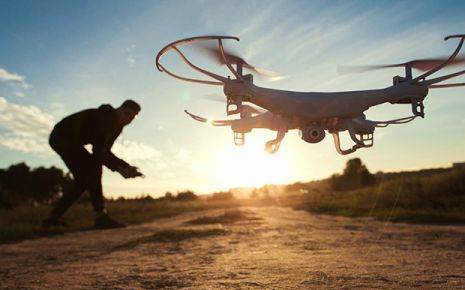
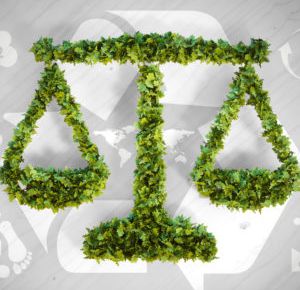
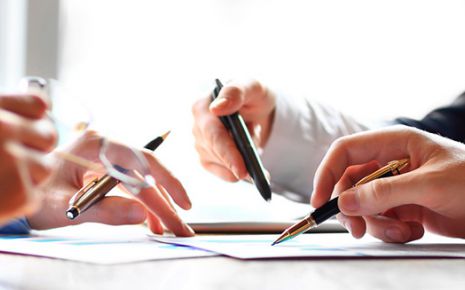

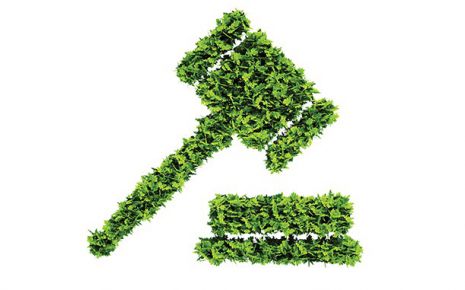
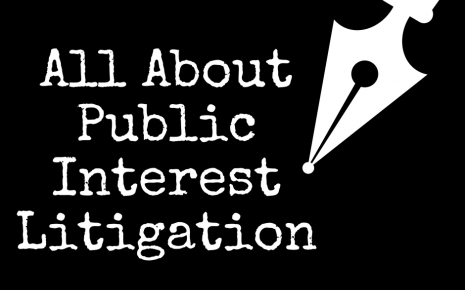


Please Drop Your Comments